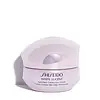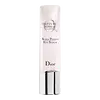What's inside
What's inside
 Key Ingredients
Key Ingredients

 Benefits
Benefits

 Concerns
Concerns

 Ingredients Side-by-side
Ingredients Side-by-side

Water
Skin ConditioningDimethicone
EmollientButylene Glycol
HumectantGlycerin
HumectantAlcohol
AntimicrobialDimethicone/Vinyl Dimethicone Crosspolymer
Skin ConditioningMyristyl Myristate
EmollientPetrolatum
EmollientHydrogenated Polydecene
EmollientBehenyl Alcohol
EmollientCetyl Ethylhexanoate
EmollientGlyceryl Stearate Se
EmulsifyingPotassium Methoxysalicylate
BleachingMethyl Methacrylate Crosspolymer
Stearyl Alcohol
EmollientDimethylacrylamide/Sodium Acryloyldimethyltaurate Crosspolymer
Polysorbate 60
EmulsifyingPEG-40 Stearate
EmulsifyingTocopheryl Acetate
AntioxidantPhenoxyethanol
PreservativeCI 77891
Cosmetic ColorantParfum
MaskingSorbitan Tristearate
EmulsifyingTrisodium EDTA
PEG-10 Dimethicone
Skin ConditioningSodium Citrate
BufferingOryzanol
Skin Conditioning2-O-Ethyl Ascorbic Acid
Skin ConditioningMica
Cosmetic ColorantSilica
AbrasiveXanthan Gum
EmulsifyingSodium Metaphosphate
BufferingLimonene
PerfumingCitric Acid
BufferingPEG/PPG-14/7 Dimethyl Ether
Skin ConditioningAluminum Hydroxide
EmollientBenzyl Benzoate
AntimicrobialButylphenyl Methylpropional
PerfumingCI 77491
Cosmetic ColorantLinalool
PerfumingSodium Hyaluronate
HumectantCitronellol
PerfumingCrataegus Monogyna Flower Extract
Skin ConditioningTocopherol
AntioxidantWater, Dimethicone, Butylene Glycol, Glycerin, Alcohol, Dimethicone/Vinyl Dimethicone Crosspolymer, Myristyl Myristate, Petrolatum, Hydrogenated Polydecene, Behenyl Alcohol, Cetyl Ethylhexanoate, Glyceryl Stearate Se, Potassium Methoxysalicylate, Methyl Methacrylate Crosspolymer, Stearyl Alcohol, Dimethylacrylamide/Sodium Acryloyldimethyltaurate Crosspolymer, Polysorbate 60, PEG-40 Stearate, Tocopheryl Acetate, Phenoxyethanol, CI 77891, Parfum, Sorbitan Tristearate, Trisodium EDTA, PEG-10 Dimethicone, Sodium Citrate, Oryzanol, 2-O-Ethyl Ascorbic Acid, Mica, Silica, Xanthan Gum, Sodium Metaphosphate, Limonene, Citric Acid, PEG/PPG-14/7 Dimethyl Ether, Aluminum Hydroxide, Benzyl Benzoate, Butylphenyl Methylpropional, CI 77491, Linalool, Sodium Hyaluronate, Citronellol, Crataegus Monogyna Flower Extract, Tocopherol
Water
Skin ConditioningGlycerin
HumectantPropanediol
SolventNiacinamide
SmoothingButylene Glycol
HumectantDiglycerin
HumectantPolyglycerin-3
HumectantBoron Nitride
AbsorbentAframomum Angustifolium Seed Extract
Skin ConditioningPaeonia Lactiflora Root Extract
Skin ConditioningLilium Candidum Bulb Extract
Skin ConditioningJasminum Officinale Flower Extract
MaskingAvena Sativa Kernel Extract
AbrasiveSaccharomyces Cerevisiae Extract
Skin ConditioningSecale Cereale Seed Extract
AbrasiveAscorbyl Glucoside
AntioxidantAdenosine
Skin ConditioningSodium Tocopheryl Phosphate
AntioxidantPalmaria Palmata Extract
Skin ProtectingHydrolyzed Soy Protein
HumectantAlcohol
AntimicrobialXylitol
HumectantChlorphenesin
AntimicrobialParfum
MaskingHydroxyacetophenone
AntioxidantCI 77891
Cosmetic ColorantSodium Hydroxide
BufferingSodium Surfactin
CleansingPyrus Cydonia Seed Extract
MaskingSodium Benzoate
MaskingBiosaccharide Gum-2
Skin Conditioning1,2-Hexanediol
Skin ConditioningSodium Acetylated Hyaluronate
HumectantSodium Metabisulfite
AntioxidantPotassium Sorbate
PreservativeTrehalose
HumectantPentylene Glycol
Skin ConditioningCarbomer
Emulsion StabilisingAcrylates/C10-30 Alkyl Acrylate Crosspolymer
Emulsion StabilisingMica
Cosmetic ColorantCaprylyl Glycol
EmollientWater, Glycerin, Propanediol, Niacinamide, Butylene Glycol, Diglycerin, Polyglycerin-3, Boron Nitride, Aframomum Angustifolium Seed Extract, Paeonia Lactiflora Root Extract, Lilium Candidum Bulb Extract, Jasminum Officinale Flower Extract, Avena Sativa Kernel Extract, Saccharomyces Cerevisiae Extract, Secale Cereale Seed Extract, Ascorbyl Glucoside, Adenosine, Sodium Tocopheryl Phosphate, Palmaria Palmata Extract, Hydrolyzed Soy Protein, Alcohol, Xylitol, Chlorphenesin, Parfum, Hydroxyacetophenone, CI 77891, Sodium Hydroxide, Sodium Surfactin, Pyrus Cydonia Seed Extract, Sodium Benzoate, Biosaccharide Gum-2, 1,2-Hexanediol, Sodium Acetylated Hyaluronate, Sodium Metabisulfite, Potassium Sorbate, Trehalose, Pentylene Glycol, Carbomer, Acrylates/C10-30 Alkyl Acrylate Crosspolymer, Mica, Caprylyl Glycol
Ingredients Explained
These ingredients are found in both products.
Ingredients higher up in an ingredient list are typically present in a larger amount.
Alcohol comes in many different forms. Different types of alcohol will have different effects on skin. This ingredient is usually an astringent alcohol.
These alcohols are drying on the skin. They may strip away your skin's natural oils and even damage your skin barrier. Astringent alcohols may also irritate skin.
Other types of astringent alcohols include:
According to the National Rosacea Society based in the US, you should be mindful of products with these alcohols in the top half of ingredients.
Any type of sanitizing product will have high amounts of alcohol to help kill bacteria and viruses.
Fatty alcohols come from plant oils such as coconut oil. These can help hydrate the skin and are non-irritating. Some fatty alcohols include cetyl and stearyl alcohol.
Learn more about AlcoholButylene Glycol (or BG) is used within cosmetic products for a few different reasons:
Overall, Butylene Glycol is a safe and well-rounded ingredient that works well with other ingredients.
Though this ingredient works well with most skin types, some people with sensitive skin may experience a reaction such as allergic rashes, closed comedones, or itchiness.
Learn more about Butylene GlycolCi 77891 is a white pigment from Titanium dioxide. It is naturally found in minerals such as rutile and ilmenite.
It's main function is to add a white color to cosmetics. It can also be mixed with other colors to create different shades.
Ci 77891 is commonly found in sunscreens due to its ability to block UV rays.
Learn more about CI 77891Glycerin is already naturally found in your skin. It helps moisturize and protect your skin.
A study from 2016 found glycerin to be more effective as a humectant than AHAs and hyaluronic acid.
As a humectant, it helps the skin stay hydrated by pulling moisture to your skin. The low molecular weight of glycerin allows it to pull moisture into the deeper layers of your skin.
Hydrated skin improves your skin barrier; Your skin barrier helps protect against irritants and bacteria.
Glycerin has also been found to have antimicrobial and antiviral properties. Due to these properties, glycerin is often used in wound and burn treatments.
In cosmetics, glycerin is usually derived from plants such as soybean or palm. However, it can also be sourced from animals, such as tallow or animal fat.
This ingredient is organic, colorless, odorless, and non-toxic.
Glycerin is the name for this ingredient in American English. British English uses Glycerol/Glycerine.
Learn more about GlycerinMica is a naturally occurring mineral used to add shimmer and color in cosmetics. It can also help improve the texture of a product or give it an opaque, white/silver color.
Serecite is the name for very fine but ragged grains of mica.
This ingredient is often coated with metal oxides like titanium dioxide. Trace amounts of heavy metals may be found in mica, but these metals are not harmful in our personal products.
Mica has been used since prehistoric times throughout the world. Ancient Egyptian, Indian, Greek, Roman, Aztec, and Chinese civilizations have used mica.
Learn more about MicaParfum is a catch-all term for an ingredient or more that is used to give a scent to products.
Also called "fragrance", this ingredient can be a blend of hundreds of chemicals or plant oils. This means every product with "fragrance" or "parfum" in the ingredients list is a different mixture.
For instance, Habanolide is a proprietary trade name for a specific aroma chemical. When used as a fragrance ingredient in cosmetics, most aroma chemicals fall under the broad labeling category of “FRAGRANCE” or “PARFUM” according to EU and US regulations.
The term 'parfum' or 'fragrance' is not regulated in many countries. In many cases, it is up to the brand to define this term.
For instance, many brands choose to label themselves as "fragrance-free" because they are not using synthetic fragrances. However, their products may still contain ingredients such as essential oils that are considered a fragrance by INCI standards.
One example is Calendula flower extract. Calendula is an essential oil that still imparts a scent or 'fragrance'.
Depending on the blend, the ingredients in the mixture can cause allergies and sensitivities on the skin. Some ingredients that are known EU allergens include linalool and citronellol.
Parfum can also be used to mask or cover an unpleasant scent.
The bottom line is: not all fragrances/parfum/ingredients are created equally. If you are worried about fragrances, we recommend taking a closer look at an ingredient. And of course, we always recommend speaking with a professional.
Learn more about ParfumWater. It's the most common cosmetic ingredient of all. You'll usually see it at the top of ingredient lists, meaning that it makes up the largest part of the product.
So why is it so popular? Water most often acts as a solvent - this means that it helps dissolve other ingredients into the formulation.
You'll also recognize water as that liquid we all need to stay alive. If you see this, drink a glass of water. Stay hydrated!
Learn more about Water